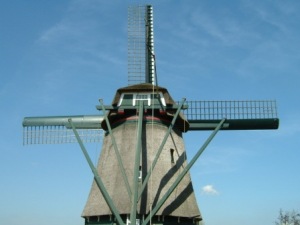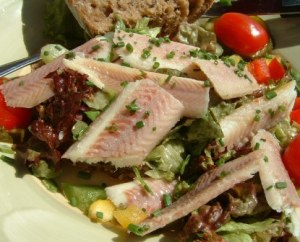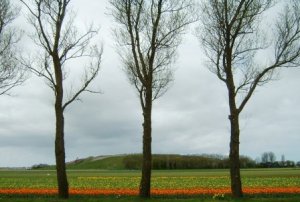
hutspot
It was a great pleasure to travel beside a fellow voracious eater armed with an admirable sweet tooth. And to top it off she could even out pace me getting around town (and out of town) on foot in search of something to eat.
Not that my expectations for food were set high:
The Netherlands does not have a distinct culinary culture because . . . the absence of a strong culinary tradition at the court due to an emphasis on Calvinist soberness. Food is seen as a necessary part of life, with no need for luxury.

the best quiche ever
Clearly this was not looking good. Still, the basic staples of Dutch food described in travel guides appealed: cheese and pancakes. Plus, it is spring, which means seasonal smoked eel on the menu, supposedly.
- a pancake with baked-in cheese covered in preserved ginger;
- the most perfect slices of quiche ever — light and airy in a crispy thin crust scattered with salty ham or luscious goat cheese;

bitterballen
- a late-supper Rijsttafel — a personal smorgasbord of Indonesian delights in graduated spiciness (note: spicy in Holland does not equal spicy in NY);
- perfect yogurt dip and baba ganoush inside a hip restored church in de Pijp district;
- roombrodje which caught our eye in a tiny bakery and turned out to be as good as “cream bread” sounds like it should be;
- a three-course meal of delectable tomato soup, hutspot with “bal/wurst” and vla dessert, all for 9,50 euros; and
- a final evening of canal-side bitterballen — deep-fried meaty croquettes — cheesy fondue at a brown bar at the coolest square in town and poffertjes — miniature yeast-based pancakes — at the carnival.

room broodje
Whew.
And then there is the matter of the 10 km eel.
The trouble with an adventuresome traveling partner is that she is game for anything. That includes ideas like: Let’s take the train to this stop in the middle of nowhere, where my bike route map of Holland indicates there may be a combination of different shaded little lines that lead to a tiny town where, I read in my 20-plus-year-old Michelin Green Guide, they serve smoked eel.
 When we disembarked at Spaarnwoude (which a train conductor made me practice pronouncing three or four times) before the mighty blue mass of IKEA, I was skeptical myself. But a few steps away, under the highway overpass and over a small hill, we found a park-like setting and a legitimate route. Bridges linked us over the water where needed. We even passed two windmills.
When we disembarked at Spaarnwoude (which a train conductor made me practice pronouncing three or four times) before the mighty blue mass of IKEA, I was skeptical myself. But a few steps away, under the highway overpass and over a small hill, we found a park-like setting and a legitimate route. Bridges linked us over the water where needed. We even passed two windmills.
But then the distances posted became grew and by the time we were in the town of Spaarndam itself we had covered about 5 kilometers and still had to make it back.
In desperate need of a bathroom as well as hungry for lunch, I directed us straight past the first cafe in order to examine every possible option in this one-lane-and-a-canal town. An hour later, we settled into the Tourist Cafe, which was not only a charming 100-year-old building and served exactly what I was looking for — paling or eel — but was the first and only place we had come upon. Most importantly, they had a bathroom.
Without that, I fear my friend may have abandoned me for a very solitary 5 kilometer stroll back to the Spaarnwoude train stop.
She forgave my oddness, again. The eel was worth every step.




 Amsterdam appears to be forcefully redefining its public image. I dare to suggest that Amsterdamers themselves never had any doubt about its nature, but city officials seem intent to present a better image to the general public outside. So when a certain disreputable commentator from the United States described the city as a “cesspool of corruption and crime” (which not surprisingly makes no sense at all) two residents, supported by the local tourist bureau came out with the Youtube video “
Amsterdam appears to be forcefully redefining its public image. I dare to suggest that Amsterdamers themselves never had any doubt about its nature, but city officials seem intent to present a better image to the general public outside. So when a certain disreputable commentator from the United States described the city as a “cesspool of corruption and crime” (which not surprisingly makes no sense at all) two residents, supported by the local tourist bureau came out with the Youtube video “ Less original but even more alluring to me, for the first time this year Amsterdam, the International Bulb Center and the Tulip Museum got together to plant a whole lot of tulips in public spaces, museum gardens and even a few backyards. This is their attempt “to revive the city as a tulip capital.”
Less original but even more alluring to me, for the first time this year Amsterdam, the International Bulb Center and the Tulip Museum got together to plant a whole lot of tulips in public spaces, museum gardens and even a few backyards. This is their attempt “to revive the city as a tulip capital.”


 It started off as The Great Tulip Caper: Three days of biking through the bulb fields of Holland, staying at cozy bed and breakfasts and visiting charming towns, gardens and windmills. Then Iceland got involved and the trip truncated. Deftly adapting to new circumstances, my visiting friend and I rerouted a one-day excursion combining train and bike to maximize both the pedaling and flowering experience.
It started off as The Great Tulip Caper: Three days of biking through the bulb fields of Holland, staying at cozy bed and breakfasts and visiting charming towns, gardens and windmills. Then Iceland got involved and the trip truncated. Deftly adapting to new circumstances, my visiting friend and I rerouted a one-day excursion combining train and bike to maximize both the pedaling and flowering experience. purchasing process which erased any illusion Dutch efficiency, we sought out our track. Unfortunately, the entrance involved a narrow staircase with a 90-degree turn and a flood of pushy passengers who had just disembarked. Did I mention the bikes were made of iron?
purchasing process which erased any illusion Dutch efficiency, we sought out our track. Unfortunately, the entrance involved a narrow staircase with a 90-degree turn and a flood of pushy passengers who had just disembarked. Did I mention the bikes were made of iron? encouragingly print little tulips throughout the region. The late spring brought us past one field of disappointingly green tulip buds, but we pedaled on and were soon rewarded with row upon row of vibrant colors from tulips as well as hyacinths and daffodils, normally spent by this time.
encouragingly print little tulips throughout the region. The late spring brought us past one field of disappointingly green tulip buds, but we pedaled on and were soon rewarded with row upon row of vibrant colors from tulips as well as hyacinths and daffodils, normally spent by this time.

 circumvents the enormous Schipol International Airport.
circumvents the enormous Schipol International Airport. turn in, and thus convinced that it could not be too dangerous for two biking ladies at twilight, we followed.
turn in, and thus convinced that it could not be too dangerous for two biking ladies at twilight, we followed.